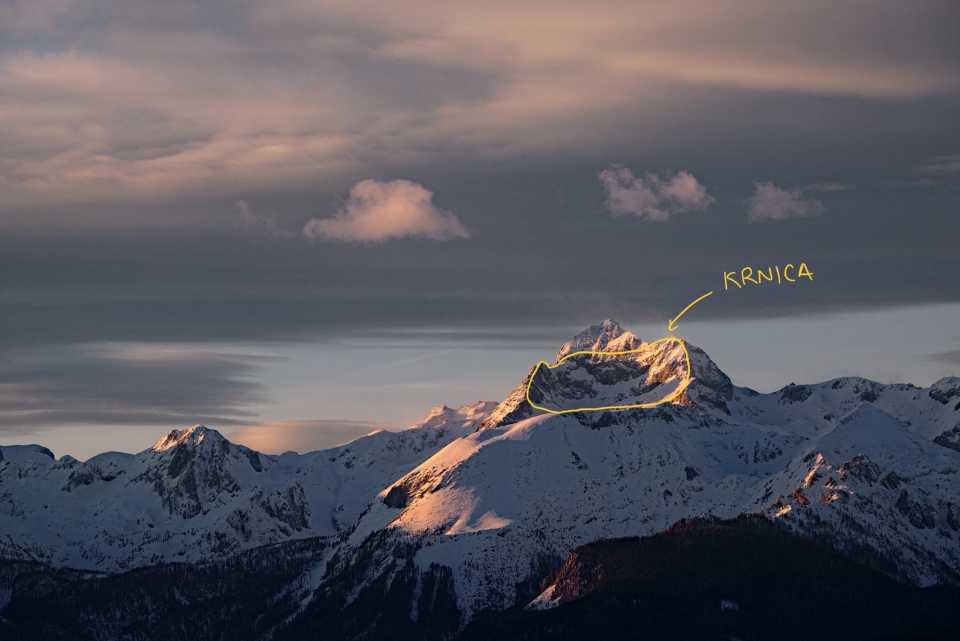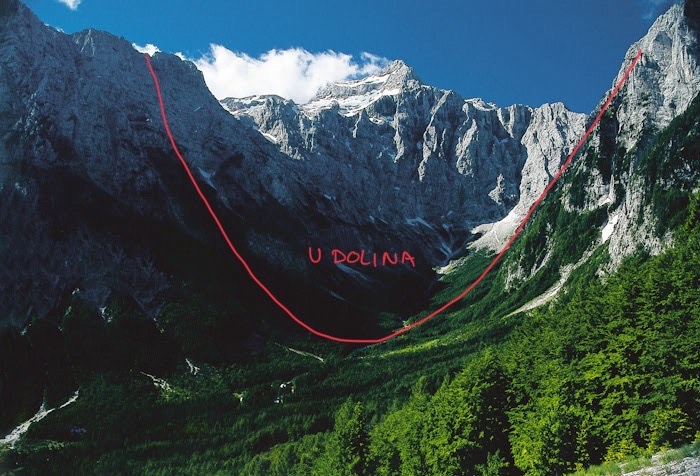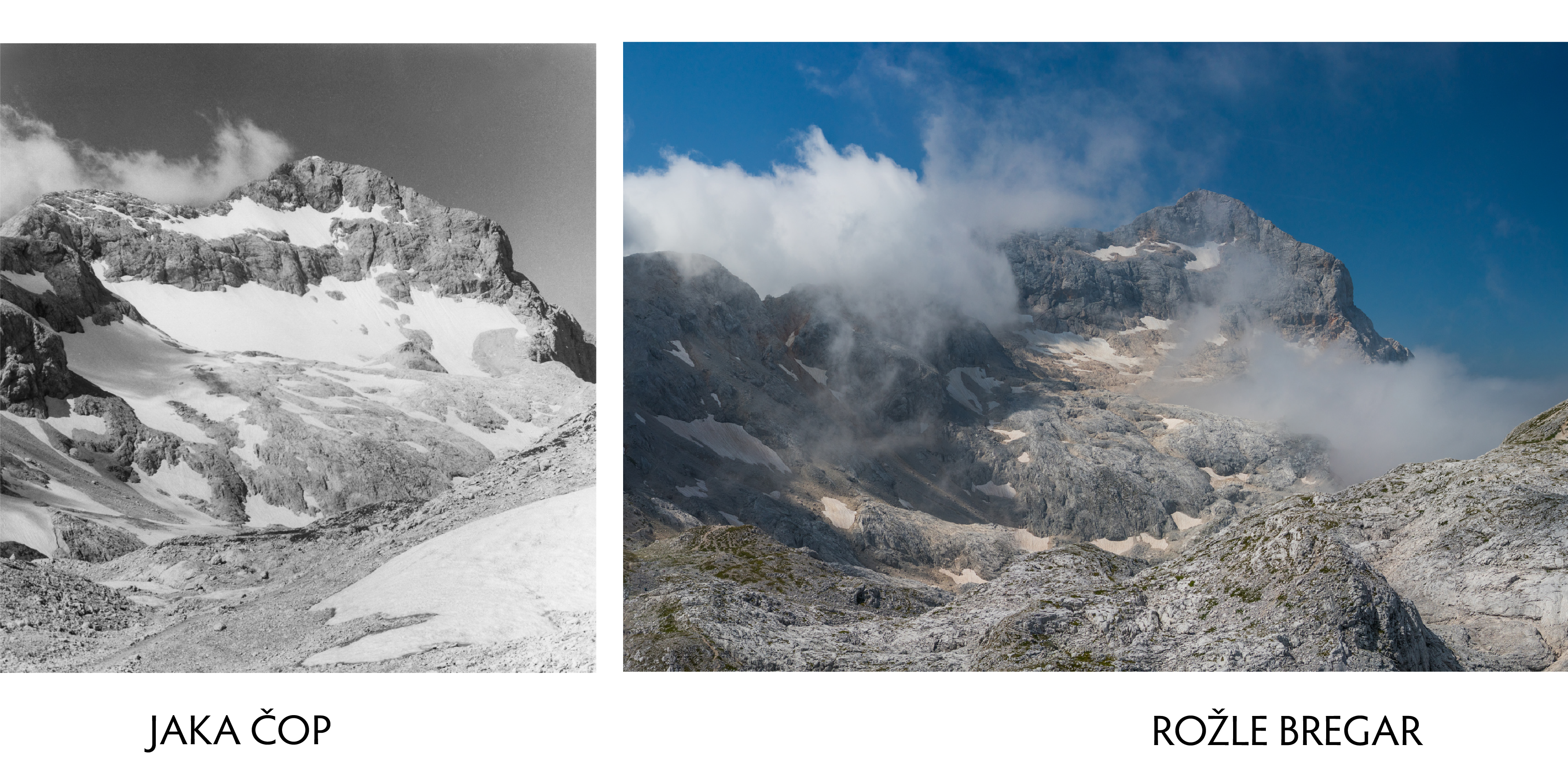A glacier is a large mass of ice formed from snow that slowly moves downhill due to its weight. As the glacier moves, it conforms to the underlying surface and its parts move at different speeds, creating characteristic glacial features on the surface.
The glacier breaks and tears the bedrock on its way, grinding the glacial trough. The pressure and friction generate enough heat to cause some of the ice to melt, and the water flows through crevices to the base, accumulating beneath the glacier to form a glacial river. This river carries along fragmented rock, which deepens the valley.
Glaciers form through the accumulation of snow, which, through continuous melting and refreezing and due to its own weight, gradually transforms into glacial ice.
The beginning of a glacier is usually found in a cirque. Often, a lake is located at the bottom of the cirque. At the edge of the cirque and where the underlying surface bends, the glacier bends, creating deep crevices. As the glacier moves, it deposits material in the form of moraines. Moraines are classified based on their location into terminal, lateral, medial, and ground moraines. Alpine glaciers reshape mountain ranges into distinctive shapes, which are revealed when the glacier recedes.
Valleys that were shaped by glaciers typically have U-shaped cross-section and remnants of terminal and lateral moraines. In the Julian Alps, the most well-known glacial valleys are Kot, Krma, Vrata, Tamar, and Trenta.
Glaciers are important water reservoirs. Especially during hot and dry summer months, they help maintain river flow in streams originating in the mountains. They provide fresh drinking water, sufficient quantities for irrigation, and power for hydroelectric plants.
Due to climate change, glaciers are currently shrinking, creating ecological and economic problems. For instance, the accelerated retreat of the Triglav Glacier began after 1980 and intensified into the early 21st century. Some projections suggest that glaciers in the Alps could lose up to 75% of their area by the end of the century due to rising average annual temperatures. According to experts, the Triglav Glacier has shrunk to the point where it no longer exists.



DID YOU KNOW?
- In addition to the Triglav Glacier, Slovenia also has the glacier under mountain Skuta in the Kamnik-Savinja Alps.
- Some glaciers end in lakes or the sea, where large ice masses or icebergs calve off from them.

Students of Koroška Bela Elementary School, as part of their study on the Alps and International Mountain Day, discussed the causes and effects of glacier melting, including the Triglav Glacier. Under the mentorship of Andreja Prezelj, they created first-person stories on the theme "Every Day I’m Shorter."
I am a glacier, and I am from Switzerland. Compared to my friends, I’m still quite long. Last summer was so hot that I almost suffocated. My best friend died last summer; I’ll probably be gone in no more than ten summers. My favorite season is winter. It’s coming now, so my mood is slowly improving. I miss it more each summer.
Winter has arrived. Now I get a fresh supply of snow every day. The first skiers have also arrived. I feel it as a massage when they ski over me. The only downside is the pillars of the ski lift, which once severely injured me. But even winters are getting warmer. This year, skiers left a month earlier than usual. I’m shrinking faster all the time; today I’ve already lost two centimeters. The lake below me is growing more and more. The warming helps it but harms me. At first, I held on to three other glaciers at the top, and one a bit lower. Now I hold on to just one. Spring is coming. I’ve already shrunk by a meter over the winter. I’m now half as short as I was 25 years ago. I will melt faster than I thought. Three years later … It’s midsummer morning, and I’m only a meter long. I’ll melt away just after noon. Goodbye!
- Maša Ahec
I'm getting shorter! I'm not a fraction. It used to take me valleys to sit down and get all the dirt off my tongue. Now I am crumbling among the stones. I used to like to scratch my tongue. Now I don't have it anymore. When I was young, I stretched all the way to Bohinj and Lesce. Now I am just a piece of ice under Triglav. I cried and created a lake, two lakes. In the good old days, it was a pleasant -14°C. What is it now? Most of my brothers are dead. I am still waiting for that. I gave Triglav a cap to make it more beautiful, but now I need it to survive.
- Martin Žuber
I have been in this world for a long time, but it has never been so hot. It is also because of you, the people who are releasing toxic gases into the air that are helping to warm the Earth faster. Then they climb Triglav and measure me and marvel at my small size. More and more people are starting to take notice of me. Apparently, they have finally realised that glaciers are an important source of water. My ice used to be up to 800 m thick, but now I am just a tiny sheet of ice. I hope that people will change their habits and maybe in the future I will grow up a bit again.
- Ema Pernuš
Hello! I'm a glacier, but I won't be for much longer. In about five years, I'll just be a small stream flowing down from the mountains. Last year, my cousin in Switzerland disappeared. Too much traffic and global warming mean that we won't be around for much longer. What bothers me most are those who drive diesel BMWs or Mercedes on our mountain roads. But I cheer, "Bravo, bravo," for those who pass by in a Tesla or another electric car.
- Lan Pekolj
I am a glacier and I do not know what to do anymore. I used to be much bigger and longer. Back then there were mammoths walking all over me. Now I am shorter every day. Also because of the emissions caused by you humans. And there is nothing I can do. If only you knew what would happen if the glaciers melted. Sea levels would rise and people would have to move away from coastal areas. Droughts would occur in some places, and you’d be asking for me to return. But by then, I’ll already be gone. Eventually, you’d even run out of drinking water. It would mean a lot to me if you drove less and walked, took the bus, or rode a bike more often.
- Miha Erjavec
Thank you.

